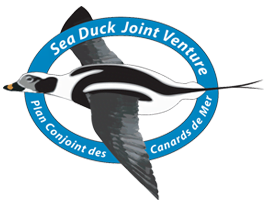Sea Duck Harvest Assessment
Sea duck harvest occurs throughout North America, largely along the Atlantic and Pacific coasts, but also in inland waters including the Great Lakes and major waterways. Sea ducks are also important as a subsistence resource for Indigenous peoples of North America, particularly species that inhabit northern Canada, Alaska, Greenland, and Russia.
Sustainability of current or potential sea duck harvest levels is largely unknown. Compared to most other waterfowl species, estimates of the number of sea ducks harvested and total number of hunters taking sea ducks is less precise, making it difficult to accurately assess the level of take and measure the impact of harvest on their populations.
The Sea Duck Joint Venture does not take an active role in harvest management of sea ducks – that role is left to the Flyway Councils through the state, provincial, federal, management and co-management authorities in the U.S. and Canada. However, SDJV and its partners have supported targeted research and assessments to reduce uncertainty around harvest estimates, critical population parameters, and changing demographics to inform harvest management decisions. For example, see SDJV Project #163: Improving US sea duck harvest estimates through improved sampling design and model development.
Reports, Publications, and Resources Related to Harvest Assessment
U.S. Migratory Bird Harvest Survey
Canada National Waterfowl Harvest Survey
Alaska Migratory Bird Co-Management Council Harvest Assessment Program
AMBCC Alaska Subsistence Harvest of Birds and Eggs, 2019-2020
Koneff et al. 2017: Evaluation of Harvest and Information Needs for North American Sea Ducks
Koneff et al. 2016: Guidance for Prioritizing Sea Duck Joint Venture Research and Monitoring Investments
Smith et al. 2022: Hierarchical Bayesian integrated model for estimating migratory bird harvest in Canada.
